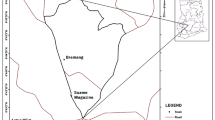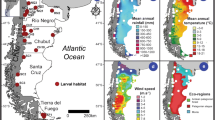Abstract
To investigate the effect of vegetation management on mosquito abundance on the floodplains of the River Dalälven, central Sweden, we studied abundance of floodwater mosquito larvae (mainly Aedes sticticus) using a paired design, comparing flooded wet meadows that were mowed or grazed by cattle to those that were unmanaged. Two floods occurred during the study year (2012), the first in conjunction with the spring flood in May and the second after heavy rainfall in July. We used the standard mosquito dipper to estimate mosquito larval abundance along transects from the shore towards permanent water on each meadow. The number of mosquito larvae was on average lower in each managed wet meadow compared to the corresponding unmanaged meadow, both in May (71 % reduction, SD = 28 %) and in July (35 % reduction, SD = 79 %). However, there was substantial variation in the difference between managed and unmanaged meadows among pairs. We measured water depth, temperature, estimated proportion of open water surface, soil nutrient levels and micro-topology. Some of the variation in larval abundance could be explained by differences in local conditions. Mosquito larval abundance increased with nutrient levels and occurrence of tussocks, and decreased with water depth and percentage open water surface, especially among unmanaged wetlands. This study suggests that mowing or grazing may reduce the abundance of floodwater mosquito larvae in flooded wet meadows. In addition, vegetation management seem to have the greatest effect on mosquito larval abundance in nutrient-rich wet meadows where tussocks are abundant.




Similar content being viewed by others

References
Balenghien T, Carron A, Sinègre G, Bicout DJ (2010) Mosquito density forecast from flooding: population dynamics model for Aedes caspius. Bull Entomol Res 100:247–254
Becker N, Petric D, Zgomba M, Boase C, Mandon M, Dahl C, Kaiser A (2010) Mosquitoes and their control, 2nd edn. Springer, Berlin
Breeland SG, Mulrennan JA Jr (1983) Florida mosquito control. Pest Control 51:16–24
Correll O, Isselstein J, Pavlu V (2003) Studying spatial and temporal dynamics of sward structure at low stocking densities: the use of an extended rising-plate-meter method. Grass Forage Sci 58:450–454
Dale PER, Hulsman K, Harrison D, Congdon B (1986) Distribution of the immature stages of Aedes vigilax on a coastal salt-marsh in South East Queensland. Aust J Ecol 11:269–278
Dale PER, Knight J, Kay BH, Chapman H, Ritchie SA, Brown MD (2008) Habitat characteristics and eggshell distribution of the salt marsh mosquito, Aedes vigilax, in marshes in subtropical eastern Australia. J Insect Sci 8:1–8
de Szalay FA, Batzer DP, Resh VH (1996) Mesocosm and macrocosm experiments to examine effects of mowing emergent vegetation on wetland invertebrates. Environ Entomol 25:303–309
Grieco JP, Vogtsberger RC, Achee NL, Vanzie E, Andre RG, Roberts DR, Rejmankova E (2005) Evaluation of habitat management strategies for the reduction of malaria vectors in northern Belize. J Vect Ecol 30:235–243
Griffin LF, Knight JM (2012) A review of the role of fish as biological control agents of disease vector mosquitoes in mangrove forests: reducing human health risks while reducing environmental risk. Wetl Ecol Manag 20(S1):243–252
Griffin L, Knight J, Dale PER (2010) Identifying mosquito habitat microtopography in an Australian mangrove forest using LiDAR derived elevation data. Wetlands 30:929–937
Horsefall WR, Novak RJ, Johnson FL (1975) Aedes vexans as a flood-plain mosquito. Environ Entomol 4:675–681
Hribar LJ, DeMay DJ, Lund UJ (2010) The association between meteorological variables and the abundance of Aedes taeniorhynchus in the Florida Keys. J Vect Ecol 35:339–346
Jiannino JA, Walton WE (2004) Evaluation of vegetation management strategies for controlling mosquitoes in a southern California constructed wetland. J Am Mosq Control Assoc 20:18–26
Lawler SP, Reimer L, Thiemann T, Fritz J, Parise K, Feliz D, Elnaiem DE (2007) Effects of vegetation control on mosquitoes in seasonal freshwater wetlands. J Am Mosq Control Assoc 23:66–70
Leisnham PT, Slaney DP, Lester PJ, Weinstein P (2005) Increased larval mosquito densities from modified landuses in the Kapiti region, New Zealand: vegetation, water quality, and predators as associated environmental factors. EcoHealth 2:313–322
Louca V, Lucas MC, Green C, Majambere S, Fillinger U, Lindsay SW (2009) Role of fish as predators of mosquito larvae on the floodplain of the Gambia River. J Med Entomol 46:546–556
Lundström JO (1994) Vector competence of western European mosquitoes for arboviruses: a review of field and experimental studies. Bull Soc Vect Ecol 19:23–36
Lundström JO, Schäfer ML, Hesson J, Blomgren E, Lindström A, Wahlqvist P, Halling A, Hagelin A, Ahlm C, Evander M, Broman T, Forsman M, Persson Vinnersten TZ (2013) The geographic distribution of mosquito species in Sweden. J Eur Mosq Control Assoc 31:21–35
Mercer DR, Sheeley SL, Brown EJ (2005) Mosquito (Diptera: Culicidae) development within microhabitats of an Iowa wetland. J Med Entomol 42:685–693
Nikulin G, Kjellström E, Hansson U, Strandberg G, Ullerstig A (2011) Evaluation and future projections of temperature, precipitation and wind extremes over Europe in an ensemble of regional climate simulations. Tellus 63:41–55
Peng Z, Simons FE (2007) Advances in mosquito allergy. Cur Opin Allergy Clin Immunol 7:350–354
Persson-Vinnersten TZ, Östman Ö, Schäfer ML, Lundström JO (2014) Insect emergence in relation to floods in wet meadows and swamps in the River Dalälven floodplains. Bull Entomol Res (in press)
R Development Core Team (2011) R: a language and environment for statistical computing. R Foundation for Statistical Computing, Vienna, Austria. http://www.R-project.org
Ritchie SA, Addison DS (1992) Oviposition preferences of Aedes taeniorhynchus (Diptera, Culicidae) in Florida mangrove forests. Environ Entomol 21:737–744
Roberts D (2012) Responses of three species of mosquito larvae to the presence of predatory dragonfly and damselfly larvae. Entomol Exp Appl 145:23–29
Rydén P, Björk R, Schäfer ML, Lundström JO, Petersen B, Lindblom A, Forsman M, Sjöstedt A, Johansson A (2011) Outbreaks of Tularemia in a boreal forest region depends on mosquito prevalence. J Infect Dis 205:297–304
Rydzanicz K, Kacki Z, Jawien P (2011) Environmental factors associated with the distribution of floodwater mosquito eggs in irrigated fields in Wroclaw, Poland. J Vect Ecol 36:332–342
Schäfer ML, Lundström JO (2009) The present distribution and predicted geographic expansion of the floodwater mosquito Aedes sticticus in Sweden. J Vect Ecol 34:141–147
Schäfer ML, Lundstrom JO, Pfeffer M, Lundkvist E, Landin J (2004) Biological diversity versus risk for mosquito nuisance and disease transmission in constructed wetlands in southern Sweden. Med Vet Entomol 18:256–267
Schäfer ML, Lundström JO, Petersson E (2008) Comparison of mosquito (Diptera: Culicidae) faunas by wetland type and year in the lower River Dalälven region, central Sweden. J Vect Ecol 33:150–157
Service MW (1995) Mosquito ecology: field sampling methods. Chapman & Hall, London
Thullen JS, Sartoris JJ, Walton WE (2002) Effects of vegetation management in constructed wetland treatment cells on water quality and mosquito production. Ecol Eng 18:441–457
Vinaker F, Lavaud F (2005) Allergie aux piqures de moustiques/mosquito bite allergy. Rev Fr Allergol Immunol Clin 45:620–625
Walton WE (2012) Design and management of free water surface constructed wetlands to minimize mosquito production. Wetl Ecol Manag 20:173–195
Acknowledgments
This study was financed by the four County Administrative Boards around the lower River Dalälven, Dalarna, Gävleborg, Uppsala & Västmanland Counties through their Regional Landscape Strategy Plan: Mosquito, Humans and Nature around the lower River Dalälven. Especially, we are grateful for the help from Ingmar Lindquist at Uppsala County Board for help with finding suitable study areas. Thanks also to all the landowners who provided us access to their land for this study.
Author information
Authors and Affiliations
Corresponding author
Electronic supplementary material
Below is the link to the electronic supplementary material.
Rights and permissions
About this article
Cite this article
Östman, Ö., Wengström, Å., Gradin, U. et al. Lower abundance of flood water mosquito larvae in managed wet meadows in the lower Dalälven floodplains, Sweden. Wetlands Ecol Manage 23, 257–267 (2015). https://doi.org/10.1007/s11273-014-9377-z
Received:
Accepted:
Published:
Issue Date:
DOI: https://doi.org/10.1007/s11273-014-9377-z



